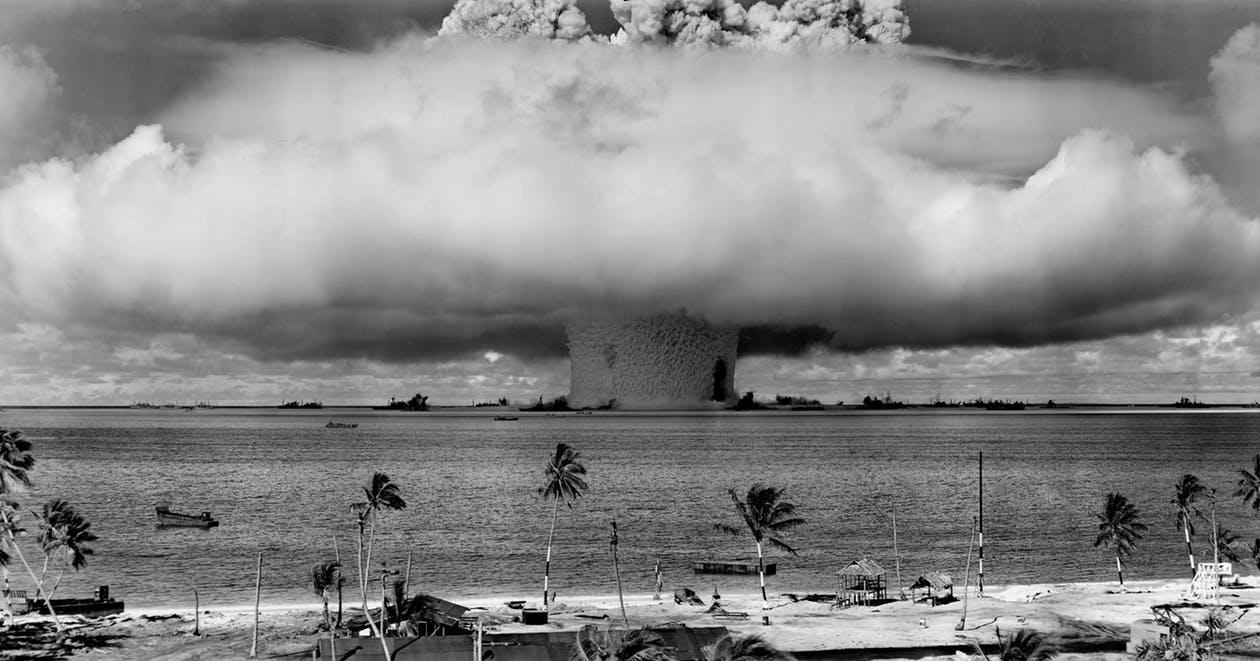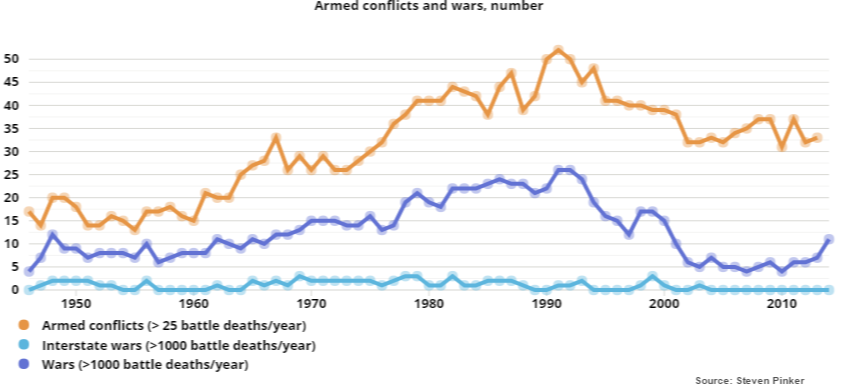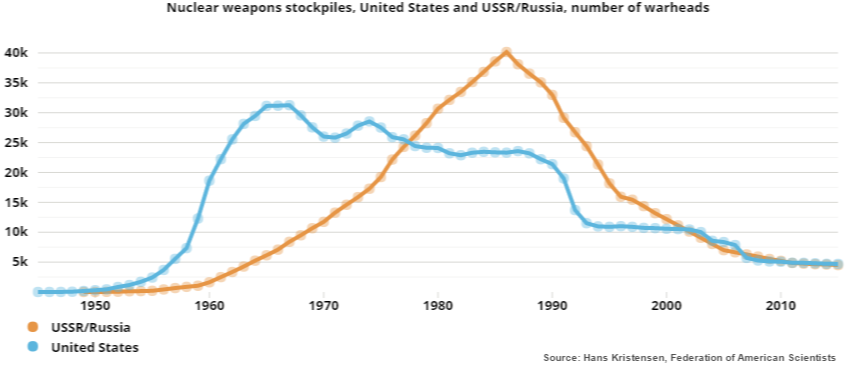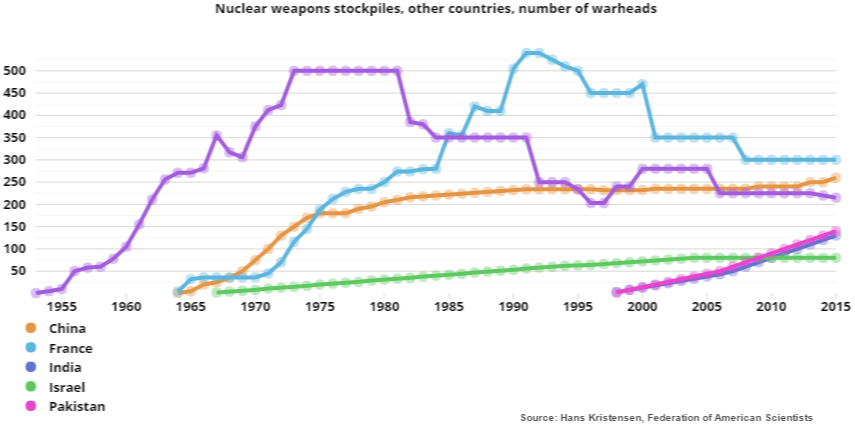The day before yesterday was Memorial Day and an opportunity to remember U.S. soldiers who died in battle. Today, let us look at some positive trends in the world of international conflict. First, the end of the Cold War has led to a decline in overall violence. Interstate wars have by and large ceased to exist, although “internationalized internal conflicts,” such as the Russian invasion of eastern Ukraine and Saudi Arabia’s bombing of Yemen, are still with us. Civil wars are also rarer, in spite of the on-going conflicts in Libya, Syria and Iraq. Unfortunately, battle-related deaths are increasing. That said, fewer people die in battle than was the case in the last years of the Cold War.


While the United States has had a professional military since 1973 when the draft ended, many countries around the world maintain conscript militaries. The length of military conscription has been falling globally, indicating that a growing number of governments in the world think that military conflict is less rather than more likely in the future. The “intensity” of militarization has also declined. The number of military personnel per 1,000 people, for example, continues to decline.


And, as I have written in Reason before, humanity’s destructive potential–while still considerable–has been declining. In 1986, for example, the Soviet Union had over 40,000 nuclear warheads, while the United States’ nuclear arsenal peaked in 1967 at over 31,000 warheads. Last year, both countries’ nuclear arsenal contained less than 5,000 warheads each.

All the while, the world has continued to grow more prosperous and democratic. Let us hope that these salutary trends continue and that we never have to look back at the 2010s as the good old days.


This article first appeared in Reason.







